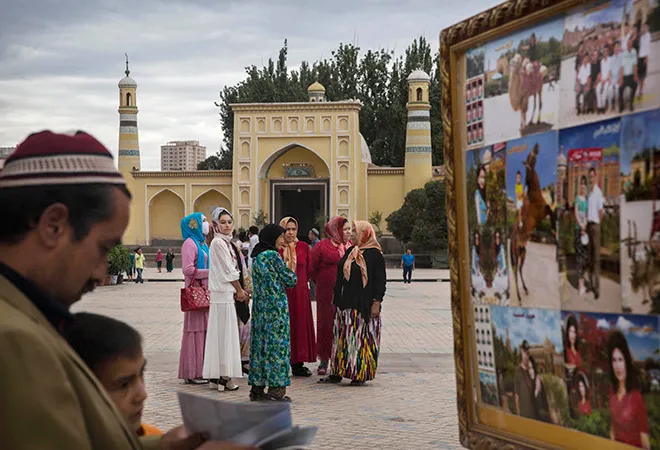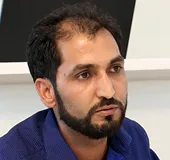
Uyghur Muslims of Xinjiang and their rich cultural ethos are on the verge of excision as Beijing has started its state-sponsored campaign against Uyghur women through forced sterilisation, abortion and implanting contraceptive devices. This “demographic genocide” of the most supressed ethnic minority was restarted by Chinese Communist Party (CCP) with full vigour after Chinese President Xi Jinping made his first visit to the restive Xinjiang region in 2014. During his visit, Xi stressed on the integration of Uyghurs with the dominant Han culture. Soon after his visit, Zhang Chunxian, a top official of Xinjiang Party Committee stressed on implementation of family planning regulations according to Article 15 of Chapter 3 of the Xinjiang Uygur Autonomous Region to stabilise birth rates. The integration of Uyghur’s through family planning regulations has served Beijing’s agenda to bring about demographic change, erosion of rich cultural identity and subjugation of the ethnic minorities of the region.
Historically, the women of Central Asia including Xinjiang were the powerful symbols of cultural identity and considered the guardians of the same. After the communist regime established its control over Xinjiang, China implemented its policy of homogenisation of culture to introduce communist doctrine of “togetherness” of all societies into a “whole unit” in the 1960s. Xinjiang, because of its unique cultural identity and centrifugal tendencies, became the main target and their culture, customs, ideas and habits were attacked. Mao’s wife, Jiang Qing, considered the native Uyghurs as “foreign invaders and aliens”. Qurans were burnt, mosques were closed, destroyed or used for pig breeding, circumcision was banned. For example, 29,545 mosques in the whole of Xinjiang in 1949 were reduced to just 1,400 after the Cultural Revolution.
During the Cultural Revolution, the Uyghur women were at the forefront of resistance against Beijing’s onslaught, upholding the native traditions and customs alive by safeguarding culture and religion within families. They also kept these traditions intact by production of traditional handicrafts such as doppas (a white soft cap on with embroidered designs). Uyghur women used these doppas and head scarves and even veils as a symbolic resistance to Chinese culture and Sinicisation. Furthermore, the brave Uyghur women retained the stable birth rates even during the horrific cultural onslaught on this particular minority group by using traditional painful methods at the time of child delivery.
In 1955, Beijing created the Xinjiang Uyghur Autonomous Region (XUAR), which was granted autonomy in theory but not in practice. In 1979, the Chinese Communist Party (CCP) made one child policy mandatory under the Article 12 of its new Marriage Law. Xinjiang authorities issued the provincial regulations under Article 15 of Chapter 3 of the Xinjiang Uygur Autonomous Region for family planning in 1981 that was implemented on minorities from 1983. Under this autonomous law, the minorities who are living in urban areas can have two children, while those living in rural areas are entitled with having up to three. This minority family planning policy led to riots in Xinjiang. Protests erupted in Beijing, with Uyghur students, fearing further demographic alteration of their land, demanding scrapping of the repressive family planning regulation.
However, in practice there was no autonomy even in family planning. The fate of the new born babies in Xinjiang under this minority family planning law was decided by the CCP officials at the county level and broken down to township, village and group levels. Uyghur women and their families were forced to pay fines (2,000 to 6,000 yuan) and subjected to forced abortion at any stage of pregnancy even if it was a third child under the provincial regulations. Uyghur women and their families paid the fine and kept the increasing Han population under check. All of this was done to change the demography of Xinjiang and assimilate Uyghurs into the mainstream Chinese population. The Uyghurs women braved the CCP and kept the birth of their babies outside of the quota system a secret. This was done by not availing access to modern health services and preferring the option of traditional midwives. Most women chose to go to their parental homes or their relatives in other administrative divisions for their deliveries.
The geo-strategic importance of a restive Xinjiang increased manifold in the second decade of the 21st century, especially after the inauguration of the much-hyped Belt and Road Initiative (BRI) in 2013. Three out of six major BRI land corridors run through Xinjiang, where mass influx of the Hans led to further alienation, which in turn led to the advent of militant separatism, like the knife attacks at Kunming railway station in 2014. Soon after the attack, President Xi in his maiden visit to region, demanded tough action against the civic unrest and announced measures for greater integration and economic growth. The CCP started repressive Sinicisation, hi-tech surveillance, re-education camps and the socio-economic exploitation of the indigenous Uyghur population with increased Han migration to alter the demography of the region.
China abolished its one child policy in 2016 with some provinces even announcing financial rewards to encourage people to have more children. However, to check the Uyghur population, much more stress was given on forced sterilisation, abortions and forced implant of intrauterine devices of Uyghur women. The CCP has poured in hundreds of millions of dollars for this campaign. Women were detained in re-education camps where they were forcefully fitted with IUDs and sexually humiliated. Some were given medications that stoped menstruation cycles, especially in southern Xinjiang. Between 2015 and 2018, in two of the famous cities of southern Xinjiang – Khotan and Kashgar, the natural population growth rate fell by 84 percent, from 1.6 percent to 0.26 percent. While Xinjiang accounts for only 1.8 percent of the Chinese, but 80 percent of IUDs in whole of China were fitted among Uyghurs women.
The CCP’s targeted campaign in Xinjiang, which has gained momentum after the visit by President Xi in 2014, is not only aimed to contain the population growth of Uyghur’s, but supress the custodians of Uyghur culture. The way the CCP has gone about implementing its programme since last four years shows that Beijing will never be the rules-based benevolent hegemon globally neither for its neighbours nor for the Muslim countries who, under the politico-economic influence of China, have endorsed it policies in Xinjiang. Most of the major Muslim countries have endorsed the policies of CCP against the minorities of Xinjiang at global forums from time to time. When 22 democratic countries, including Japan, wrote a letter to close down re-education camps, 37 Muslim countries including Saudi Arabia, Pakistan and the UAE defended the Chinese hegemonic policies in Xinjiang and commended China's efforts in "protecting human and promoting human rights through development".
Furthermore, after reports of forced sterilisation and abortions of Uyghurs women broke, the USA came down heavily on the CCP. The US Secretary of State Michael Pompeo said, “We call on the Chinese Communist Party to immediately end these horrific practices”. However, some Muslim countries like Pakistan even after these horrific tales of Uyghur women have reaffirmed their firm support to China “on affairs concerning China's core interests and issues of major concern, such as those related to Xinjiang” during the second round of China-Pakistan Foreign Ministers' Strategic Dialogue.
Till date the increased pressure on CCP to end the cultural repression of Xinjiang from democratic world of Europe, the US, Japan and so on has failed to achieve results. However, after the recent increased onslaught on Uyghur women, authoritative Muslim world should give up its economic elite interests and join hands with western democracies to save the last guardians of the Uyghur culture.
The views expressed above belong to the author(s). ORF research and analyses now available on Telegram! Click here to access our curated content — blogs, longforms and interviews.




 PREV
PREV


